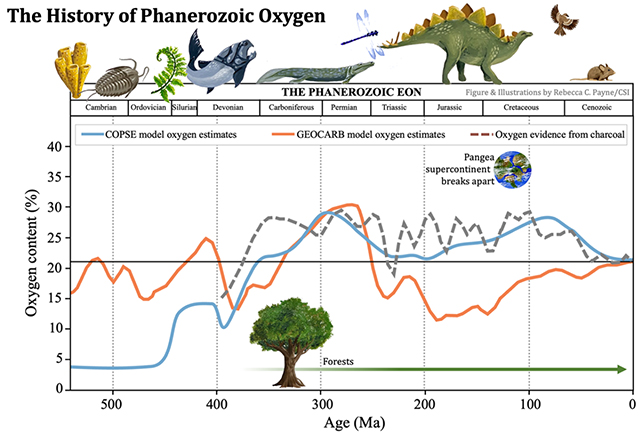Scientists described times when Earth was “more attractive to aliens”
- November 12, 2023
- 0
To any aliens looking for alien life forms of their own, Earth would have been more interesting in the time of the dinosaurs than it is today. Astrobiologist
To any aliens looking for alien life forms of their own, Earth would have been more interesting in the time of the dinosaurs than it is today. Astrobiologist

To any aliens looking for alien life forms of their own, Earth would have been more interesting in the time of the dinosaurs than it is today. Astrobiologist Rebecca Payne and Cornell University astronomer Lisa Kaltenegger simulated the past 540 million years of Earth’s history (the Phanerozoic Eon) to see how various biomarkers used to detect signs of life across long distances have changed.
They found that about 100 to 300 million years ago, two important pairs of biomarkers were stronger: oxygen and methane, and ozone and methane. First of all, this is linked to the spread of green fields, which provide much higher levels of oxygen to the atmosphere.
This means that any hypothetical alien telescope looking for light signatures (or transmission spectra) could detect our planet much more easily during the Jurassic period than today.

“The bright fingerprint of modern Earth was the template we used to identify potentially habitable planets, but there was a time when that fingerprint was even more distinct, better at showing signs of life,” says Kaltenegger. “This gives us hope that it may be a little easier to detect signs of life—even large, complex life—elsewhere in space.”
The amount of oxygen in the atmosphere is affected by a variety of factors, from the level of forest cover on land to different marine species in the ocean and prevailing weather conditions. For most of the last 400 million years or so, atmospheric oxygen levels are thought to have ranged from 16 to 35 percent. This is called the “fire window”: the smaller it is, the fire will not start, the larger it is, the more difficult it is to extinguish.
“The Phanerozoic covers only the last 12 percent of Earth’s history, but it covers nearly all of the time when life was more complex than microbes and sponges,” Payne says.
Astronomers are searching the rest of the universe for the same light signatures, looking for signs of an atmosphere that could support a form of life we might be familiar with. We now know what a Phanerozoic planet should look like, so the search can be more precise. Thanks to advanced technology on the James Webb Space Telescope (JWST), scientists now have the ability to analyze the atmospheres of exoplanets, but we still can’t be sure if life will develop as it has on Earth.
“Hopefully we’ll find some planets now that have more oxygen than Earth, because that will make the search for life a little easier,” says Kaltenegger. “And who knows, there may be other dinosaurs waiting to be found.”
Source: Port Altele
As an experienced journalist and author, Mary has been reporting on the latest news and trends for over 5 years. With a passion for uncovering the stories behind the headlines, Mary has earned a reputation as a trusted voice in the world of journalism. Her writing style is insightful, engaging and thought-provoking, as she takes a deep dive into the most pressing issues of our time.